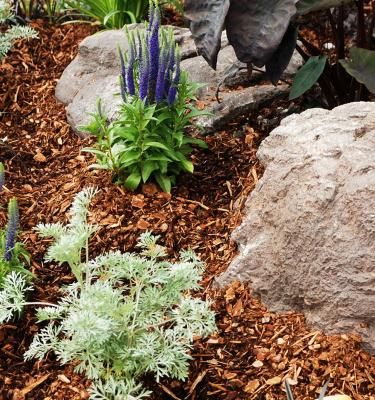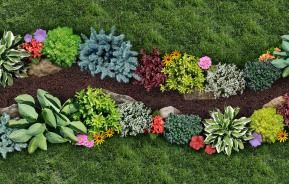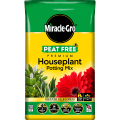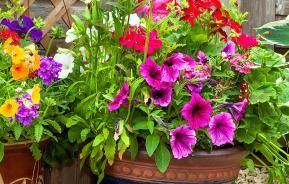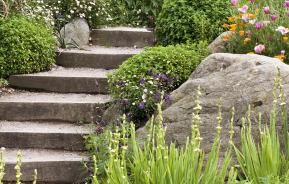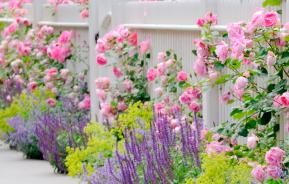Where to use decorative bark
Decorative bark is mostly used to cover bare soil areas in flower beds and borders and to create simple, naturalistic pathways. This provides a clean visual background that will make your plants and flowers shine through, finishing off your garden in style.
You’ll find that decorative bark comes in various colours, sizes and types of bark. It is also great to use in a children’s play area. Not only does it provide a softer landing, but it also protects the garden from wear and tear. It can also easily be scooped up and removed when the play area is no longer needed and transferred to the flower beds. Or you can use it to create a path.
When is the best time to put bark down?
The best time to apply decorative bark such as Levington Water Saving Decorative Bark is when the soil is thoroughly moist. Most often this is in late winter or early spring, but bark can be applied at any time of year so long as the soil is moist.
The benefits of decorative bark for your garden
Applying a thick layer of decorative bark to your soil surfaces (called a mulch) does much more than just make your garden look attractive. Decorative bark:
1. Helps soil retain moisture
By softening the impact of rain water, it enables the water to effectively permeate the soil. The mulch also reduces evaporation from the soil surface. This will gradually help to improve the structure of the soil.
2. Suppresses weed growth
It creates a physical barrier, depriving weeds of the sunlight they need to grow. Weed seeds that also land on the mulch surface will be unable to get to the soil beneath to grow.
3. Protect plant roots
The bark will also help insulate the soil, regulate the temperature and protect your plant roots from cold, freezing weather in winter and hot, dry conditions in summer.
4. Improve soil fertility
Bark releases a range of nutrients and organic matter as it decomposes. This helps to improve the soil and boost its fertility. The process will take longer than other mulches such as farmyard manure so it will still look good for at least 2-3 years.
How to use decorative bark
Do the following when using decorative bark in your garden:
1. Ensure you have scissors, a spade and gardening gloves
You’ll need a pair of scissors to open the top of the bag. Once opened you can either tip the bag up and pour on to the designated area, or use your hands or a small spade to scatter around the plants(remember to wear suitable gardening gloves if spreading by hand).
2. Apply a minimum layer of 5cm (2in) thick
It’s key to ensure you spread it at the right thickness, so that it reduces unnecessary evaporation from the soil surface and is thick enough to suppress the weeds.
3. Use a rake to ensure the bark is evenly spread
To make sure that you get the bark even and you can move it under plants and shrubs, use the flat edge of the soil rake.
4. Avoid piling up the mulch onto the stems of plants though as this can rot them
Leave a gap of at least 10cms.
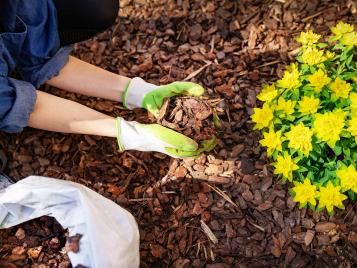
Decorative bark ideas
As well as using it as mulch, there are also plenty of other uses for decorative bark in the garden. Here are some ideas:
1. Apply decorative bark as a fantastic contrast to other materials used in your garden
This will bring back the feel of nature in modern designs.
2. Use decorative bark to create a colourful contrasting path
This is also safer than many hard surfaces as it doesn’t get slippery in the winter.
3. Create a natural pathway with decorative bark
Where gravel, slabs or other materials just wouldn’t fit in.
4. Keep the birds in your garden happy
Decorative bark can be great for our feathered friends, giving a safe and natural flooring for them to scratch about in.
Frequently asked questions about how finish your garden with decorative bark
Is decorative bark mulch?
You can use decorative bark as mulch in your garden. This will help retain soil moisture, suppress weeds and regulate soil temperature. When the bark decomposes, it will also release a range of nutrients that enhance the soil’s fertility.
Does decorative bark stop weeds?
Yes, decorative bark acts as a barrier to suppress weeds, as it deprives them of the sunlight they need to grow. Weed seeds that land on the top of the bark will find it difficult to reach the soil to germinate in.
Is decorative bark safe for dogs?
Decorative bark is safe for dogs. The most common decorative bark types include cedar and pine bark, and these won’t harm your dog. Make sure you don’t use cocoa shell mulch though as this is toxic to dogs.
